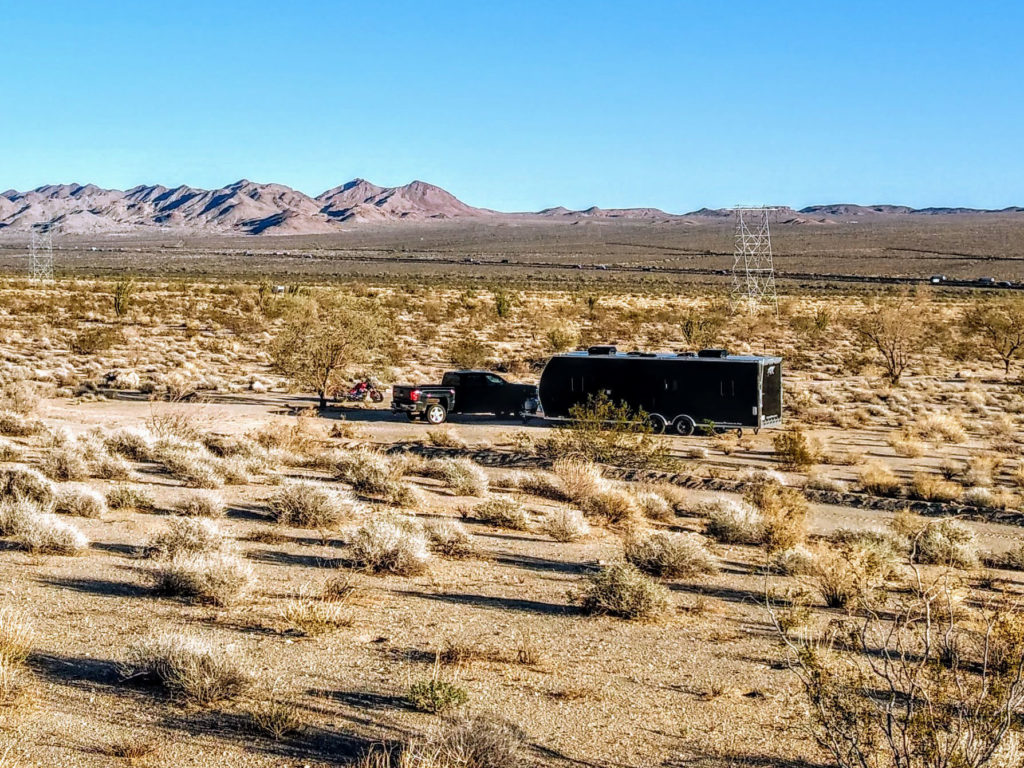No, but it helps. Deciding whether you need four-wheel drive for boondocking depends on how far away from other people you want to camp. To get into the more remote areas, you will definitely need a four-wheel drive vehicle. But if you don’t mind boondocking closer to the highway, you’ll never need four-wheel drive.

Do I Need Four-Wheel Drive for Boondocking?
There are still lots of open, public land where a two wheel drive tow vehicle can easily pull a trailer into. However, it’s true that many dirt roads leading into canyons, hills, mountains, and other out of the way places will require four wheel drive. Most of these places are not so much muddy or sandy, but have steep rises that will cause a two wheel drive truck, van, or motorhome to lose traction.
Moreover, many of these roads may not be wide enough to turn around in, thus requiring you to drive out of the road, and hence may force you into softer dirt or sand.
How to Decide If You Should Buy a Four-Wheel Drive Vehicle
If you plan to spend time boondocking, then you should buy a four-wheel vehicle, no doubt. Even if you plan to boondock only part of the time, a four-wheel drive vehicle will get you into more places than a two-wheel drive.
Two-wheel drive pickup trucks are cheaper than four-wheel drive, but not by much. A four-wheel drive truck will only add about $2,000 to $4,000 over a two-wheel drive.
It is true, however, that two-wheel drive pickup trucks get better gas mileage due to the lighter weight. But even that is nominal too. Where a two-wheel drive truck might get 15 miles per gallon, a four-wheel drive truck will get 13 miles.
Otherwise, if you have not yet purchased a pickup truck for boondocking, then definitely get the four-wheel drive. You won’t get stuck in the mud or sand, you’ll get up those steep, gravel roads, and you’ll even be able to help other people get unstuck.
What About a Four-Wheel Drive Van?
If your goal is to buy a van, then definitely get a four-wheel drive van. Most people buy the Mercedes Sprinter for that very reason. The Dodge ProMaster and the Ford Transit do not offer four-wheel drive.
Read our other article, “Campervan Versus Trailer for Boondocking“.
Is All-Wheel Drive (AWD) the Same as Four-Wheel Drive (4WD)?
No, not at all…
- With AWD, each wheel spins independently. A computer controls the rate of spin of each wheel based on loss of traction and which direction you are turning.
- With 4WD, all four wheels are locked together and spin at the same time. There is no computer that senses loss of traction and compensates more power to other wheels. A 4WD vehicle depends on a sandy, muddy, or icy surface to allow slippage when turning left or right.
4WD is more effective than AWD for getting you through mud and sand because all four wheels are getting full power. But 4WD cannot be used on pavement because there is no differential to allow for turning. Meanwhile, AWD is meant to be used for normal driving.
Tips for Boondocking with a Two-Wheel Drive Vehicle
- Before venturing further down a dirt road, find a place where you can unhook your trailer or toad, then explore further to see if the road will be passable.
- Use Google Maps Satellite View to find places where washes spill across dirt roads. This is usually a sign of soft sand in the road way.
- If you feel the road becoming soft, do not slow down, and DO NOT stop. Maintain your momentum and keep moving even though it’s getting rough and bumpy.
- Try to camp in places that have received a lot of online reviews. These are places that are easier to get into.
- Keep a tow rope with you (see it on Amazon). You’ll never know when you need a passing vehicle to pull you out.
- Keep leveling blocks (see it on Amazon) with you for traction to get a stuck vehicle out of the sand or mud.

